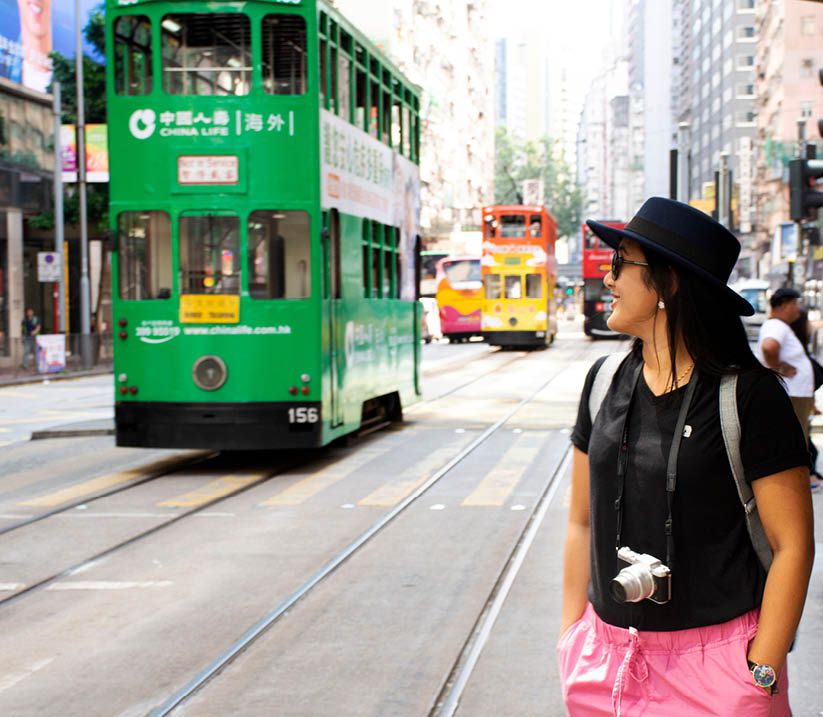Around the world, numerous cities have implemented complex digital ticketing systems to facilitate automated fare collection to increase the efficiency of growing transportation networks. Often, these ticketing systems have been implemented against the backdrop of misaligned urbanization and transport policies.
Furthermore, each transit system serves a varied group of passengers, and the diversity of urban organization between cities implies there has been no universal ticketing approach that has met the needs of all networks. However, there are consistent concerns that must be evaluated to make sure that a ticketing system continually meets evolving operational needs.
In the first of our five-part blog series on unified and interoperable ticketing, we will focus on the key passenger considerations that Public Transport Authorities (PTAs) and Public Transport Operators (PTOs) must keep in mind.
Simple, convenient and flexible ticketing.
Charging the right price for a passenger’s journey based on their network usage and any applicable concessions, is a complex task for a PTA. Arguably the foremost point of friction for public transport usage is difficulty understanding the fare that is required for a journey. If passengers are unsure about the best fare choice, or do not know if the ticket they have selected meets their needs, this can undermine the trust between operator and user. This is especially true if a user is fined for accidentally purchasing the wrong ticket.
Passengers expect tariff structures that provide them with both flexibility and value for money. Amongst other factors, crucial to creating a loyal ridership for any public transport network is to make it a more affordable and practical alternative than using a private vehicle. And in an increasingly digitized world, many passengers expect a digital or contactless payment experience that eliminates the need to queue at ticket offices and machines.
An additional challenge is providing a seamless travel experience across all modes of transportation. Despite the recognized advantages of using contactless cards, such as saving time and increasing passenger convenience, purchasing different tickets for each individual operator or mode of transport is still a reality. In some areas, groups of cities or regions, several contactless cards are even required. The reason for this is commonly the different implementation phases each provider within a network has gone through and the constraints of maintaining legacy solutions, often done to accommodate the existing habits of certain passenger groups. Be they a regular commuter, an occasional user, or a tourist visiting the city for the day, unified ticketing provides travelers with a smooth and continuous journey, with a single transit pass throughout the transportation network.
Integrated and inclusive payment options.
Between different groups of passengers, the preferred payment method can vary a great deal. The available payment options may depend on when legacy systems were implemented or existing contracts with solution providers and operators. Even within the same city, different operators may require different methods of payment, introducing unnecessary friction for passengers. Users may be required to switch from payment cards to cash, from contactless to contact card payments, or they may not be able to use new payment technologies such as digital wallets. Furthermore, each transaction may not be easily identifiable on their bank statement.
Whatever the fare collection system, be it smartcards, mobile ticketing or contactless open payments, unified ticketing offers a way to mitigate this diversity by ensuring that payment methods are consistent throughout the entire network. It enables more integrated payments between operators, strengthening the operational model of the transport network as a whole and optimizing payment acquisition contracts.
Unified ticketing also allows travelers to purchase their ticket more efficiently from any place and in any situation. However, it is important to ensure that those who may be less technologically savvy, are unbanked, or simply prefer cash, can still access the full transportation grid without exclusion.

Data sharing, security and privacy.
Historically, ticketing systems were designed with little consideration for data sharing. Siloed businesses and systems could have been integrated, but this would have been an inefficient process and come at a high cost. In addition to this, separate systems offer nearly no means for passengers to understand the impact of data processing, nor do they benefit from a single mobility account to manage all their fares, payment methods and rights.
Historically, ticketing systems were designed with little consideration for data sharing. Siloed businesses and systems could have been integrated, but this would have been an inefficient process and come at a high cost. In addition to this, separate systems offer nearly no means for passengers to understand the impact of data processing, nor do they benefit from a single mobility account to manage all their fares, payment methods and rights.
Transit fare collection systems handle a huge volume of transactions per day. The current architectural shift from card-based ticketing (CBT) to account-based ticketing (ABT) will increase service quality and help unlock better fare options for customers. Real-time transaction collection and account balance processing will allow users to reduce friction by monitoring their travel habits and payments live, meaning they can make sure they never try to travel without the necessary funds in their account. However, this enhancement in connectivity could lead to an increased risk of user data being exposed outside the boundaries of PTOs’ systems.
Individuals have the freedom to travel anonymously, and so even in a system that relies on sharing data between operators, data must be stored and managed securely. When properly managed, a unified ticketing solution facilitates a comprehensive data-led approach to travel for users. Operators working cooperatively can align their ticketing data processing to enhance security and anonymization. This helps the network to evolve according to regulations and in line with how passengers are using the service, creating a more efficient and dependable public transport offering.
A unified network.
In the transit ecosystem there will never be a homogenous user journey. Urban commuters will always have different requirements to those of occasional users in rural locations. Furthermore, urban commuter habits have changed in the last few years due to the rise of working from home following the COVID pandemic. But while personal payment preferences can never be unified, the fundamental desires for seamless experience already are.
Unified ticketing can be a big step towards making public transport a more attractive option. By implementing this model around other modernized transit solutions, such as integrated travel information that gives real-time data on arrival and departure times, vehicle occupancy or even alternative routes, networks can create a simple transit offer that helps to foster increased ridership.
Unified ticketing is a strategic investment for transport networks, and can help reduce costs and accelerate long-term objectives. However, the challenge of integrating multiple operators is significant and requires open, transparent communication between all parties.
Working with Fime.
Fime helps design and implement successful, interoperable ticketing projects. Its team of experts help guide multiple groups of stakeholders through the complexity of modern transportation networks, addressing the diverse range of passenger needs. Explore how Fime can enable fare collection modernization through the deployment of Account based ticketing.
Read our articles in our smart mobility series:

